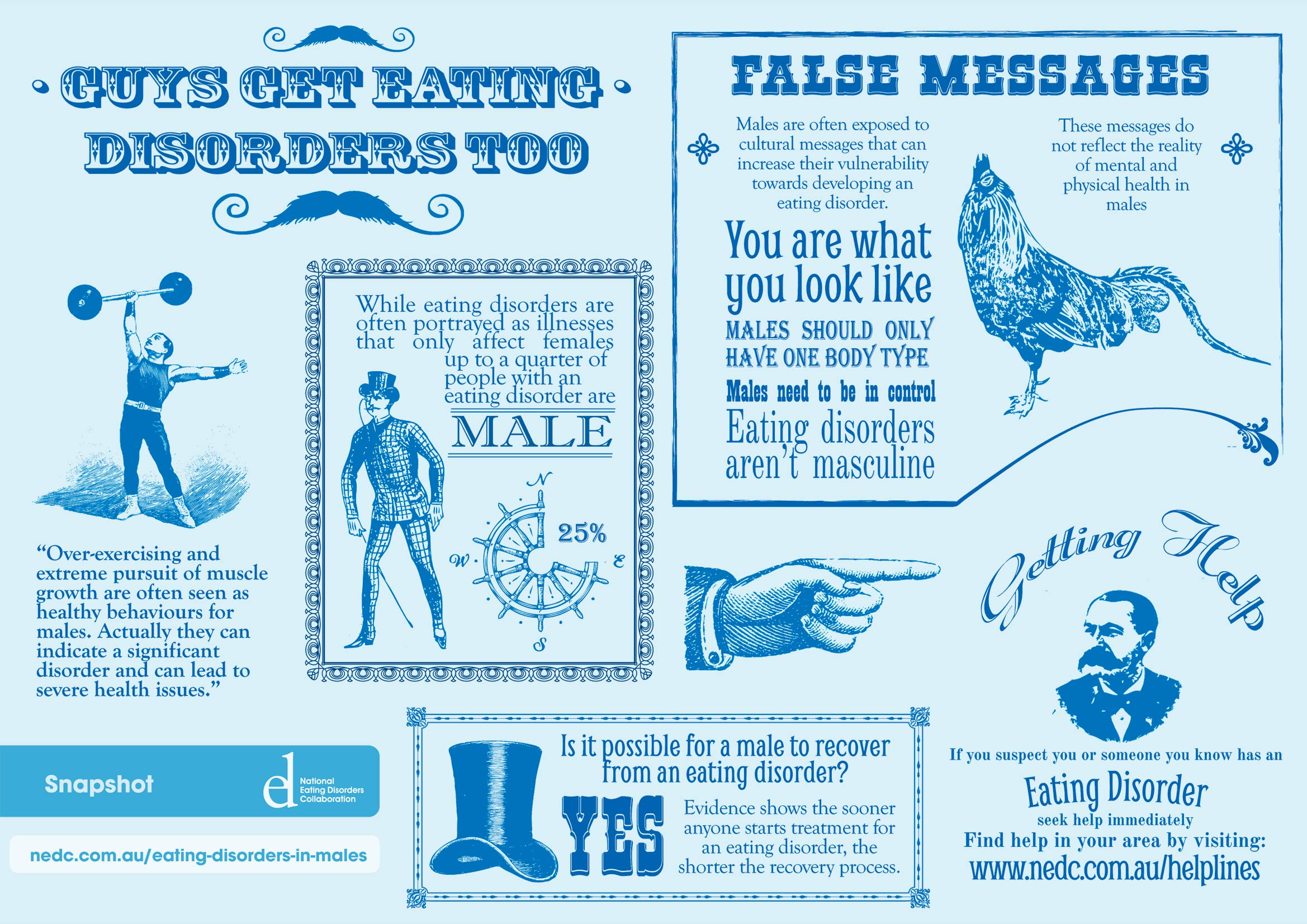By Priyam Vora
“The first time I made myself throw up was at age 14.
It was a Sunday night and my family was in the living room watching television. I sat in my room with a carton of sugar-free chocolate ice cream and a spoon, shoveling every drip of the quickly melting ice cream down my throat.
Eating in my room had become a daily habit over the years, especially after I started dieting around age 10. That particular week I was on a quick-fix diet that my stepmother had given me. The new diet was supposed to help me lose 10 pounds in one week. I was on day three and starving. I had lost four pounds already.
I ran to the bathroom to throw up that ice-cream. That would be a lot of calories, I thought to myself.”
– Zac Stafford, 26, survivor of anorexia. He is now a counselor helping boys in Chicago recover from eating disorders.
Just the words “eating disorder,” evoke the image of malnourished teenage girls and young women. But young boys and men fall victim to this painful disorder.
National Eating Disorders Association (NEDA) estimates that about up to 90 percent of individuals suffering from eating disorders worldwide are females. But that means thousands of boys and young men, the remaining 10 percent, suffer from these conditions too.
“In addition to concern about heart disease, health and obesity, males are getting really distorted messages about their bodies,” says Dr. Theodore Weltzin, an adult psychiatrist at Rogers Behavioral Health System in Wisconsin. “And they are going to extremes to try to deal with that.”
WHAT ARE THE TRIGGERS?
Experts believe that one of the primary culprits triggering an eating disorder could be the mixed messages that young men get about what constitutes a healthy diet and properly developed body.
“As strange as it may sound, some boys take “you’re so skinny” and “you look like a skeleton” as compliments,” says Rydall Charles, a psychiatrist at University of Chicago specializing in eating disorders. “Their ideas of a healthy body and diet are messed up.”
According to a study in 2004 by the University of Central Florida, men are more prone to be influenced by the Wolverine action figure the same way girls are influenced by Barbie.
“The wolverine caricature has 32-inch biceps,” said Dr. Weltzin. “Just as women feel pressured to look like stick-thin magazine models, men too are swayed by images of pumped-up hunks with broad shoulders, six-pack abs and narrow waists.”
But over-exercising and under-eating can result in eating disorder.
However, eating disorders are not simply a matter of vanity, but have a complicated mental and behavioral progression. Doctors say that the contributing risk factors include genetic vulnerability, psychological factors and socio-cultural influences.
“The cultural message that getting the ‘perfect body’ directly relates to success in other areas such as dating, getting a good job and social desirability is a major myth,” explains David Viljoen, a clinical psychologist at Society’s Faculty of Eating Disorders in London.
Perfectionism, bullying, dieting, trauma and childhood obesity are among the common socio-cultural influences that play a role on the development of eating disorders.

LET THE NUMBERS SPEAK
Research suggests the number of males with eating disorders is on the rise. According to the American Journal of Psychiatry, during the 90s, for every 10-15 women with anorexia or bulimia, there was one man. Today, for every four females with anorexia, there is one male, and for every eight females with bulimia, there is one male, figures that are higher than NEDA’s estimates.
“In my 20 years of treating eating disorders, I have seen a significant increase in males,” said Dr. Weltzin. “More than half of these males report body image and problematic exercise behaviors to change their self-perceived inadequacies.”
According to NEDA, approximately 10 percent of eating disordered individual seeking medical help are males. The numbers are likely to be higher among athletes, dancers, gymnasts, models and body builders. Experts term the cause of such eating disorders as “occupational hazards.”
The Eating Disorders Inventory, a diagnostic tool created by eating disorder researcher David Garner, found that homosexual men may be at a greater risk for developing an eating disorder because of cultural pressures within the community to be thin.
“I tried to starve myself so I could change myself on the outside because I couldn’t change what I was on the inside,” said 21-year-old Chicago resident Troy, a homosexual who recovered from his life-threatening exercise/eating disorder in 2009. “And then of course there are perfectionism issues.”
MEDIA PROMOTES AN UNHEALTHY IMAGE
Many experts attribute the increasing number of males suffering from eating disorders to society’s tendency to glamorize a skinny figure. They say the celebration of an unhealthy body image is more pronounced in Hollywood and the fashion industry.
“The media puts the beautiful models trying to lose weight on a pedestal,” said Dr. Mae Sokol, a psychiatrist at Children’s Hospital of Omaha. “The glamor industry is less about food and much more about people’s sense of self-esteem and identity.”
Freakishly slim models who starve themselves earn coveted spots on the catwalk. This is primarily the reason why, in 2006, organizers of fashion week in Madrid, Spain, announced that they were banning all models whose body mass index fell below 18.
“Fashion is a mirror and many teenagers imitate what they see on the catwalk. We have to draw lines somewhere,” said regional official Concha Guerra in a press release.
NOT JUST A GIRL’S PROBLEM
Cultural stigma can also make it more difficult for men to come forward and be open about their eating disorder. Lynn Grefe, chief executive of the NEDA, explained that males try to conceal such disorders because such disorders would mean feminine qualities or vulnerability. It is this stigma, she says, that proves to be the biggest obstacle in recovery.
“Society sees this as a girl’s disease,” said Grefe. “It’s sad.”
Therapists agree this discomfort in acknowledging that they have such a disease is a major obstacle in recovery. The fear of being perceived as less masculine makes most men shy away from seeking treatment.
“Eating disorders have been largely seen as an issue affecting women. That is why men have been far less likely to seek out treatment,” said Dr. Blake Woodside, an eating disorder therapist at University Health Network, Canada.
WATCH OUT FOR THE SIGNS
Experts advise parents to remain vigilant to identify any “red flags” that may indicate that their son has a problem because eating disorders can be intensely personal and complicated diseases.
Dr. Howard Markel, professor of psychiatry at the University of Michigan lists the most common symptoms as drastic weight loss, constantly skipping meals, and an unhealthy focus on weight. Other signs include restricting oneself to a rigid diet consisting of very few foods, exercising obsessively, and making judgmental comments about other people’s shapes and sizes. Boys with eating disorders will often wear baggy clothes to hide the effects of their disease and make frequent complaints about being cold or tired.
Nutrition consultant Rebecca Turner explains her love-hate relationship with food. “My daily thoughts were consumed with how to make ‘good’ food choices. I used the number on the weighing scale and my pace per mile to measure my self-worth.”
Turner says boys who suffer from an eating disorder are doing the same thing. They are isolated and broken, and find it increasingly difficult to explain to anybody else how uncomfortable they are in their own skin.
“Watch out for the tiniest physical, psychological or behavioral change in your son,” Dr. Markel advises parents.
EARLY INTERVENTION
The first step in treating an eating disorder is acknowledging that the condition actually exists. Due to advances in research and education, more and more males are being correctly diagnosed with eating disorders. The symptoms and consequences in men are much like those in women, because of which medical treatment is much easier.
“Eating disorders can quickly become a way of life. The earlier the diagnosis and treatment, the more likely there is to be a quicker and more successful recovery,” said Jenny Langley who almost lost her 12-year old son to anorexia. “Don’t be ashamed. Talk. Speak up. Seek help.”
The number of males suffering from eating disorders may be on the rise because the condition is associated with women, making men far less likely to seek treatment. (Federico Morando/Flickr)


